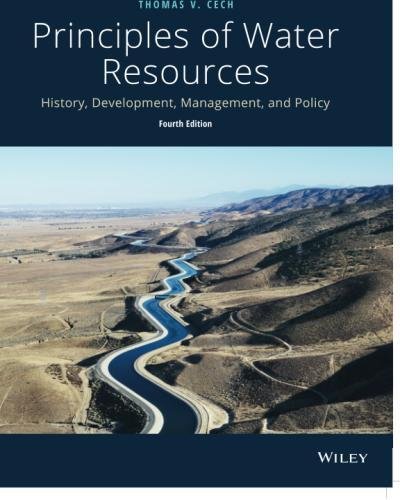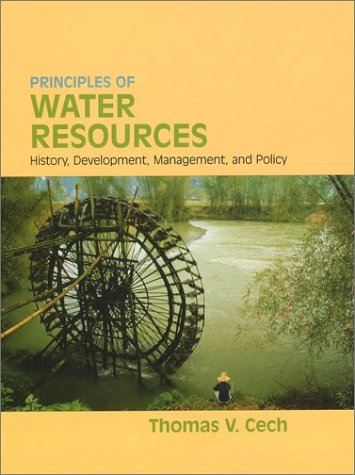Coming in 2026, Cambridge University Press will release Introduction to Environmental Data Science and Digital Geography by Professor Fernando Nardi and Tom Cech.
Proper management of water resources can take many forms, and requires the knowledge and expertise to work at the intersection of mathematics, geology, biology, geography, meteorology, political science, and even psychology. This book provides an essential foundation in water management and development concepts and practices, dissecting complex topics into short, understandable explanations that spark true interest in the field. Approaching the study of water resources systematically, the discussion begins with historical perspective before moving on to physical processes, engineering, water chemistry, government regulation, environmental issues, global conflict, and more.
Now in its fourth edition, this text provides the most current introduction to a field that is becoming ever more critical as climate change begins to threaten water supplies around the world. As geography, climate, population growth, and technology collide, effective resource management must include a comprehensive understanding of how these forces intermingle and come to life in the water so critical to us all.
With all new and updated material, the third edition provides civil engineers with a complete history of water availability. It also delves into government development, management, and policy of water usage. New information is included on international water issues, water measurement, and telemetry. Additional details are also presented on global warming and its impact on water resources. In addition, environmental engineers will gain a current understanding of the field through updated case studies and images that make the material more relevant.
 Introduction to Water Resources and Environmental Issues
Introduction to Water Resources and Environmental Issues
By Karrie Lynn Pennington & Thomas V. Cech
How much water does the world need to support growing human populations? What factors influence water quality, droughts, floods, and waterborne diseases? What are the potential effects of climate change on the world’s water resources? These questions and more are discussed in this thorough introduction to the complex world of water resources. The strength of the book is its coverage of the fundamentals of the science of water, aquatic ecology, geomorphology and hydrology, supplemented by internet resources and examples from water resource issues in the news to engage the student.
The book begins with a short history of human use and influence on water, followed by chapters on the geomorphology, hydrology, chemistry, and biology of lakes, rivers, and wetlands. Major disease issues, worldwide water quality and quantity problems, and potential solutions are addressed. Water laws, water allocation, and the conflicts involved are discussed using US and international examples. Students in departments of environmental studies, life science, Earth science, and engineering will benefit from this broad survey of these crucial issues.
 Colorado Water Law for Non-Lawyers
Colorado Water Law for Non-Lawyers
By P. Andrew Jones & Tom Cech
Why do people fight about water rights? Who decides how much water can be used by a city or irrigator? Does the federal government get involved in state water issues? Why is water in Colorado so controversial? These questions, and others like them, are addressed in Colorado Water Law for Non-Lawyers. This concise and understandable treatment of the complex web of Colorado water laws is the first book of its kind. Legal issues related to water rights in Colorado first surfaced during the gold mining era in the 1800s and continue to be contentious today with the explosive population growth of the twenty-first century. Drawing on geography and history, the authors explore the flashpoints and water wars that have shaped Colorado’s present system of water allocation and management. They also address how this system, developed in the mid-1800s, is standing up to current tests—including the drought of the past decade and the competing interests for scarce water resources—and predict how it will stand up to new demands in the future.
This book will appeal to at students, non-lawyers involved with water issues, and general readers interested in Colorado’s complex water rights law.
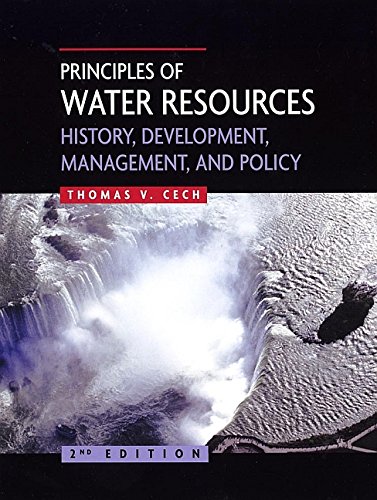 Principles of Water Resources: History, Development, Management, and Policy, Second Edition
Principles of Water Resources: History, Development, Management, and Policy, Second Edition
By Thomas V. Cech
This work is a comprehensive look at our most precious resource. With its broad coverage of the history of water availability and use, as well as government development, management, and policy of water usage, Thomas Cech’s “Principles of Water Resources, Second Edition” is ideal for students from a wide range of backgrounds. Throughout the text, interesting sidebars, policy issues, and closer looks at past and present examples of water use bring the material to life. Now updated and revised, this Second Edition features a new chapter on the economics of water, revised maps and photos, a new boxed feature titled Our Environment, a new guest essay on desalination by Dr. Fares Howari of United Arab Emirates University, and more.
The features include: rich in content; comprehensive in scope; straightforward, engaging style; case studies; attractive photos and maps; numerous sidebar discussions; international perspective; extensive definitions; discussion questions; chapter-by-chapter glossary; Internet links; multidisciplinary approach. Visit the accompanying website for: line art in PowerPoint; sample exams; and student research papers.
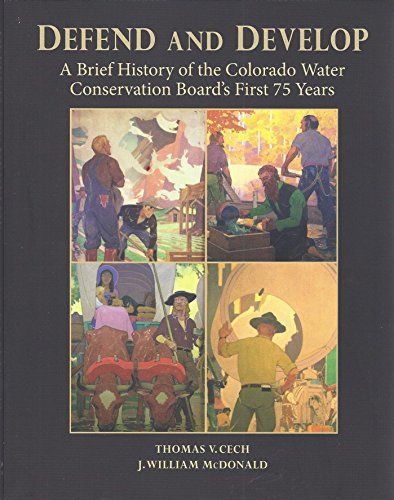 Defend and Develop
Defend and Develop
By Thomas V. Cech & J. William McDonald
Colorado sits astride the Continental Divide with all major rivers flowing out of the state. Its climate is relatively arid, with most moisture falling in the mountains in the form of snow and with rivers on the West Slope having relatively more abundant water supplies than those on the East Slope. Since all major rivers are fed primarily by melting snow, a high percentage of their annual runoff occurs in about three months during late spring and early summer. However, precipitation varies greatly from year to year, resulting in uncertain annual runoff conditions.
These circumstances have driven the policies, projects, and politics that form the history of water resources development in Colorado. In turn, the early decades of that history provided the backdrop for the enactment of laws by the 1937, Colorado General Assembly that created the Colorado Water Conservation Board (CWCB), Colorado River Water Conservation District, and enable formation of water conservancy districts.
The CWCB was created to “defend and develop” Colorado’s scarce interstate water resources. This book tells the history of its first 75 years in carrying out this mission.
 Water Colorado’s Real Gold
Water Colorado’s Real Gold
By Richard Stenzel & Tom Cech
This book contains descriptions of Colorado that were written by early explorers and pioneers, and the development of irrigated agriculture in Colorado. It also describes the series of incidents that led up to the adoption of the Prior Appropriation Doctrine. It also includes a section concerning the activities of the Constitutional Convention which led to the adoption of Colorado’sState Constitution that stated that the Prior Appropriation Doctrine will be used.
The book tells the early Colorado history with the legislative history which established the means for determining water rights priorities and the creation of the water commissioner positions. These would be the individuals who had the responsibility to enforce the priority system during times of water shortages. The legislature subsequently created the position of State Engineer, who originally was only responsible for providing stream flow information and establishing standard measuring devices that would be utilized to measure the flows of water diverted by each irrigation ditch. Later, additional responsibilities were either added or removed from the responsibilities of the State Engineer and the office.
Principles of Water Resources: History, Development, Management, and Policy presents a comprehensive look at our most precious resource. With its broad coverage of the history of water availability and use as well as government development, management and policy of water usage, this text is ideal for students in geography, biology, environmental studies, urban planning, geology, environmental engineering, soils and rating sciences, watershed science, public administration, fisheries and wildlife, forestry resources, hydrology, natural resources, and ecology. The author has enlivened the text with interesting sidebars, policy issues, and closer looks at past and present examples of water use.
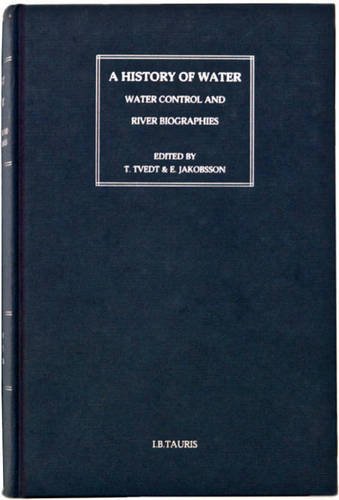 History of Water, A, Series III, Volume 2: Sovereignty and International Water Law (History of Water Series III)
History of Water, A, Series III, Volume 2: Sovereignty and International Water Law (History of Water Series III)
I. B. Tauris (Contributing author Tom Cech)
Chapter 18: “Colorado and the Western United States” by Tom Cech
As global climate change threatens to change radically both the political and physical climate with regard to water issues, so a reassessment of some of the fundamental principles of international water law is emerging. One of the most important principles being reassessed is the sovereign equality of states. This volume brings together more than thirty leading international water and legal specialists to explore the development and changing relationship between water, state sovereignty and international law.
Offering fresh insights into one of the most pressing issues in global water policy, Sovereignty and International Water Law will form an essential reference for water professionals, legal specialists and policy makers alike.
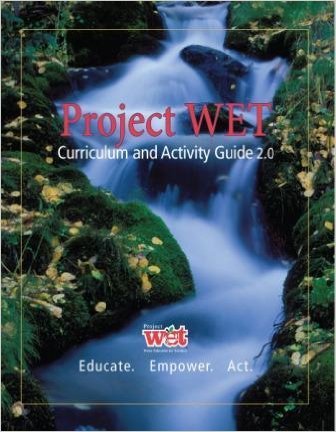 Project Wet Curriculum and Activity Guide 2.0
Project Wet Curriculum and Activity Guide 2.0
By Project Wet (Contributing author Tom Cech)
This full-color, fully revised 592-page guide contains 64 multidisciplinary water-related activities for students from Kindergarten through 12th grade. The guide features cross-reference and planning charts, a glossary and background material on activity development and field testing.
The cornerstone of Project WET is its methodology of teaching about water resources through hands-on, investigative, easy-to-use activities.
 Discover the Waters of Nebraska
Discover the Waters of Nebraska
By Project Wet (Contributing Author Tom Cech)
Discover the Waters of Nebraska invites readers to spend a day as a Nebraskan farmer; to investigate a tornado through the story of storm researcher, Dr. Josh Wurman; to travel the “Flyway Highway” as a Sandhill Crane; or to photograph the state’s “water wonders.” Other topics include the Ogallala aquifer, Nebraska’s 13 watersheds, wetlands, water history (e.g., glaciers, Native People, Lewis and Clark, windmills and the Dust Bowl) and the protection of the state’s precious water resources.
Discover the Waters of Nebraska is 24 pages filled with colorful, fun activities and stuff you just never knew about this amazing state. If you’re not a “Cornhusker,” you may want to become one after discovering Nebraska and its waters.
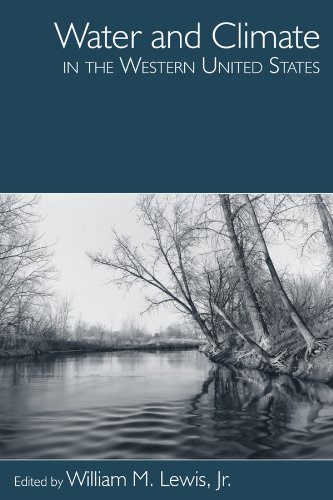 Water And Climate in the Western United States
Water And Climate in the Western United States
By William M. Lewis (Contributing Author Tom Cech)
Chapter 11: “Water Development and Management Along the South Platte River of Colorado” by Tom Cech
Water and Climate in the Western United States highlights the opportunity for and necessity of change in management of water, the West’s most crucial resource. As old policies and institutions fail to meet changing demands for and availability of water, experts in climate forecasting, water management, water law, and water use allocation reveal in this volume how new science and technology can help improve water management. They assess the degree to which vagaries of climate can be anticipated and countered through better predictions and reformed legal and management systems for allocating water.
Unique in its full, integrated coverage, this book will appeal to anyone interested in water supply and management questions as well as climate predictions.
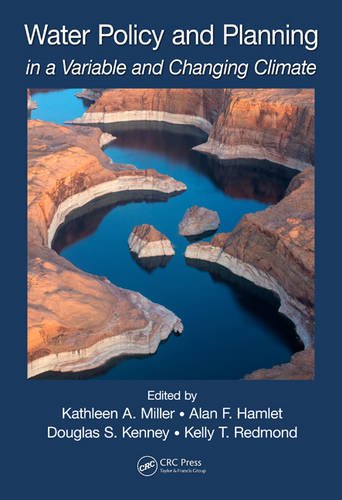 Water Policy and Planning in a Variable and Changing Climate (Drought and Water Crises)
Water Policy and Planning in a Variable and Changing Climate (Drought and Water Crises)
CRC Press (Contributing Author Tom Cech)
Chapter 3: “Integration of Surface Water and Groundwater Rights: Colorado’s Experience” by Tom Cech
Growing populations, limited water availability, and changing social values have increased the complexity of urban water supply planning. Water utilities are struggling to understand the impacts of global climate change on water supplies, water demands and vulnerability of source-area environmental resources and socio-ecological systems. This book provides insights on these issues and describes strategies for building adaptive capacity while improving environmental stewardship. It helps readers understand patterns of water availability, existing policy problems and the potential impacts of climate change.
OTHER SELECT PUBLICATIONS
-
Co-Author, “The 1969 Water Rights Determination and Administration Act, and the 2006 Well Shutdown Along the South Platte River of Colorado – Background and Perspective,” (The University of Denver Water Law Review; Denver, CO. June 2019)
-
Author, “Surface Water and Groundwater Interaction, Management, and Conflict in Colorado: Alarming Trends for the 21st Century,” (Environmental Practice Journal, Cambridge University Press)
- Co-Author, CUES: Constructing Understandings of Earth Systems (American Geological Institute; Alexandria, Virginia)
- Editor/Writer, Central Waterline newsletter (Central Colorado Water Conservancy District; Greeley, CO. Published biannually, circulation of 20,000)
